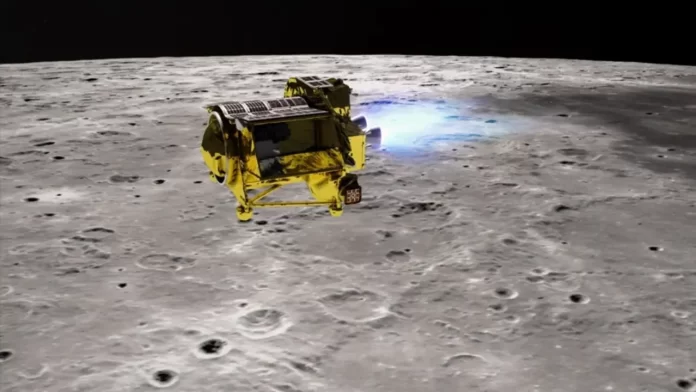On Monday, Japan’s SLIM space probe made history by entering the moon’s orbit, paving the way for the country’s first successful lunar landing, projected for next month.
Because of its ability to land precisely 100 meters (328 feet) from a predetermined target on the lunar surface, the Smart Lander for Investigating the Moon (SLIM) is affectionately known as the “Moon Sniper.”
Japan would join the ranks of only four other countries—the US, Russia, China, and India—that have successfully landed a probe on the moon if the touchdown is successful.
In a statement released Monday evening, the Japan Aerospace Exploration Agency (JAXA) said that SLIM “successfully reached the moon’s orbit at 04:51 pm Japan time” (0751 GMT) on Monday.
“The agency has confirmed that the trajectory shift was successfully executed and that the probe is operating normally,” they stated.
Landing on the moon’s surface is slated for twenty minutes after the lander begins its descent, according to JAXA, which is anticipated to begin at approximately 12:00 a.m. Japan time on January 20.
After three delays caused by weather, the H-IIA rocket, which was carrying the lander, took off in September from Tanegashima, an island in the southern part of Japan.
JAXA called the mission an “unprecedentedly high precision landing” on the moon earlier this month.
The lander’s spherical probe is a joint creation with a toy manufacturer.
Just a little larger than a tennis ball, it has the ability to alter its shape in order to navigate the surface of the moon.
According to JAXA, researchers have spent the last 20 years perfecting SLIM, and its claimed margin of error of less than 100 meters indicates an unprecedented level of accuracy compared to earlier probes that touched down “a few or 10-plus kilometers” from their objectives.
This month, Shinichiro Sakai, the SLIM project manager at JAXA, told reporters that the desire to locate certain objects on the moon’s surface, such as craters and rocks, is increasing due to technological advancements.
“The days of wanting to go “anywhere on the moon” for exploration are over,” he declared.
Sakai elaborated by saying that scientists are hoping that SLIM’s pinpoint accuracy will facilitate the sampling of lunar permafrost, which will bring them one step closer to solving the mystery of the moon’s water resources.
Both the public and private missions launched by Japan have been unsuccessful.
Omotenashi, the nation’s lunar probe, was part of the United States’ Artemis 1 mission last year, but it was unsuccessful.
After what it called a “hard landing,” Japanese firm iSpace lost contact with its craft in April, ending its fruitless attempt to become the first private corporation to land on the moon.
© AFP 2023

interesting